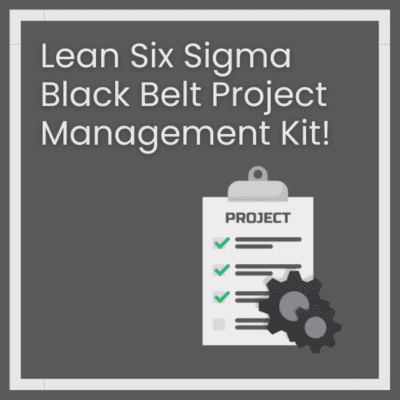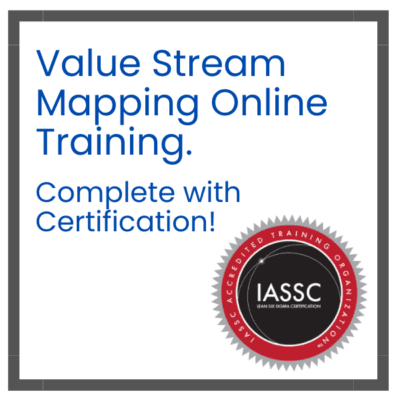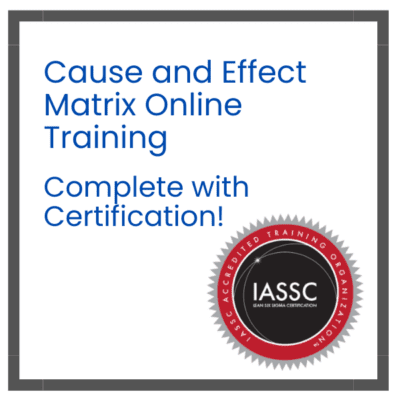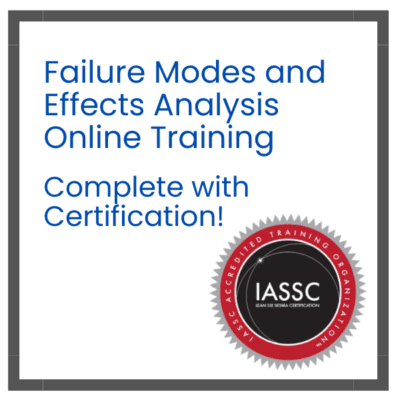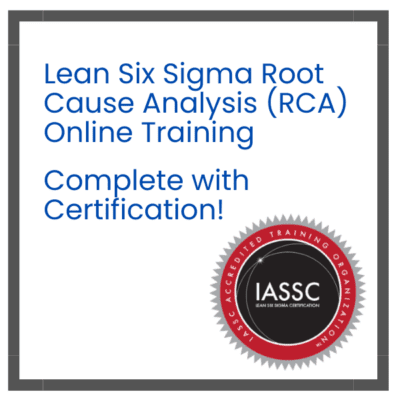
Why They Fail!, Episode #4 – “Why Capability?…”
Welcome to “Why They Fail,” the podcast that dissects the downfall of continuous improvement initiatives. Your host, Kevin Clay, a Lean Six Sigma Master Black Belt with over 25 years of experience and a mentor at Six Sigma Development Solutions, is here to deliver an unfiltered look at why so many continuous improvement efforts falter. We’re not sugarcoating anything; get ready for raw insights into the leadership agendas and shortsighted decisions that derail CI projects. But it’s not all doom and gloom—we’ll also unveil the surprisingly simple key to avoiding these pitfalls and building a phenomenal, sustainable data-driven improvement culture.
In our last episode, we explored whether your continuous improvement program is merely a “fad diet for your business,” much like personal weight loss journeys that chase quick fixes only to “crash and burn”. We discussed the sobering statistic from Pat Bergin, President of Aerofil Technology, who noted that a staggering 96 out of 100 companies undertaking continuous improvement fail or quit within 18 months. We also delved into common pitfalls such as the “Lone Ranger” approach, where a single Green Belt is expected to “save the world” without adequate support. Other issues included “stepping in someone else’s sandbox,” leading to turf wars and demoralized belts, and the futility of “trying to solve world hunger” by assigning overly broad projects. Finally, we highlighted how continuous improvement can become leadership’s “new toy,” resulting in arbitrary projects based on personal agendas rather than data-driven needs. The core message was clear: abandon quick fixes and build a strong foundation.
Today, we dive into a specific, baffling type of failure that reveals a fundamental misunderstanding of continuous improvement, particularly the Six Sigma aspect of Lean Six Sigma. This episode is titled “Why do we need Capability when we have Go/No-Go Gauges? (This is one of the stupidest question I have ever heard!)”. While the intent behind this question isn’t usually malicious, it signals a larger problem in how continuous improvement, especially Six Sigma, is taught and implemented.
Consider a scenario at a company that manufactures aluminum rims for automobiles, a plant seeking to replicate the success of its sister facility after a Lean Six Sigma deployment. During a performance discussion, the plant operations officer, himself a Black Belt, was asked about measuring the capability of their current process inputs. In manufacturing, wheel designs have specific dimensional attributes with Upper Specification Limits (USL), Lower Specification Limits (LSL), and a Target. Process capability is about understanding how consistently a process can produce outputs within these limits—a fundamental statistical concept in Six Sigma. His astonishing reply: “Why do we need capability when we have Go/No-Go Gauges?”.
Go/No-Go Gauges are simple inspection tools that provide a binary answer: good or bad. They don’t reveal
how good or bad, the extent of process variation, or if the process can consistently meet specifications over time. This COO also mentioned a dismal 62% yield, meaning many wheels had to be melted down and re-cast. This highlights an “epidemic” where Lean Six Sigma is often taught and implemented with a critical flaw. Many Lean Six Sigma “Black Belts” haven’t used statistics to solve process problems, though they are skilled in qualitative tools like Fishbone diagrams, 5-Why analysis, and Process Mapping. While these tools are essential for identifying potential root causes, they are qualitative and rely on subjective input, leading to varying results and not proving anything.
The true power of Six Sigma lies in its reliance on data and statistical analysis to validate hypotheses and identify actual root causes, which is where topics like Hypothesis Testing come into play. Unfortunately, some training companies, possibly due to clients’ fear of data, teach a watered-down version of Lean Six Sigma, omitting core statistical topics and replacing them with qualitative tools. This leaves certified belts ill-equipped to tackle complex process problems and achieve sustainable improvements. A continuous improvement effort without a strong statistical foundation is like building a house without a proper blueprint—it’s bound to crumble.
The COO’s question perfectly illustrates this problem. Go/No-Go gauges indicate if you’re hitting your target now, but process capability tells you if you’ll continue to hit it in the future and how much variation exists. It’s the difference between reacting to problems and proactively preventing them. Focusing solely on Go/No-Go means focusing on inspection, not improvement, sorting good from bad after the fact instead of understanding and controlling the process that produces them. This explains the low yield; they were reacting to defects rather than preventing them.
This brings us back to the simple key to success: building a strong foundation. A crucial part of this foundation is an unbiased, deep understanding of your processes through data. Without robust statistical tools like process capability analysis and hypothesis testing, you’re making decisions based on assumptions and “gut feelings” instead of objective evidence.
How do we avoid this trap? First, ensure continuous improvement training is comprehensive and doesn’t shy away from statistical tools, as they are the backbone of Six Sigma. Second, understand that continuous improvement is about changing how your organization thinks and makes decisions, fostering a data-driven improvement culture where insights drive improvement, not just reactions. Lean Six Sigma is a methodology where decisions are based on data, especially for prioritizing continuous improvement projects to align with Key Performance Indicators (KPIs). Without understanding process capability, you cannot effectively prioritize projects that will significantly impact your KPIs.
Embracing the full power of Lean Six Sigma, including its statistical rigor, can transform operations. Understanding process capability allows you to identify true bottlenecks, reduce variation, and achieve sustainable improvements that directly impact your bottom line. It’s about embracing data as your most powerful ally in operational excellence. If your CI efforts feel stuck in quick fixes and arbitrary projects, re-evaluate your understanding of the methodology. Are your Black Belts truly armed with the full suite of statistical tools, or are they limited by their training?. The answers are critical to unlocking continuous improvement’s true potential.
Key Takeaways from this Podcast
📈 Continuous improvement efforts often fail due to a fundamental misunderstanding of process capability.
🚫 Relying solely on Go/No-Go gauges focuses on inspection, not true process improvement.
📊 True Six Sigma power lies in data and statistical analysis to validate hypotheses and identify root causes.
👨🍳 Watered-down Lean Six Sigma training leaves “Black Belts” ill-equipped for complex problems.
💡 A data-driven improvement culture with statistical foundations is crucial for sustainable success.
A Word from our Sponsor, Six Sigma Development Solutions.
This episode of “Why They Fail” is brought to you by Six Sigma Development Solutions, Inc., providing “Operational Excellence” Around the Globe!
Six Sigma Development Solutions, Inc. offers comprehensive Lean Six Sigma certification training, accredited by the International Association for Six Sigma Certification (IASSC) as an Authorized Training Organization. They have transformed over 100 organizations in 52 countries and achieved $100M USD in savings through Lean Six Sigma, certifying over 4000 practitioners. Their partners include Aerojet Rocketdyne, Dropbox, and Mercy Health, among others.
Key Certification Training we provide:
🔗 Lean Six Sigma Green Belt (https://sixsigmadsi.com/six-sigma-green-belt/)
🔗 Lean Six Sigma Black Belt (https://sixsigmadsi.com/six-sigma-black-belt/)
🔗 Lean Six Sigma Yellow Belt (https://sixsigmadsi.com/six-sigma-yellow-belt/)
🔗 LEAN Certification (https://sixsigmadsi.com/lean-certification/)
We offer a variety of flexible training options to fit your needs! You can learn at your own pace with our Online Self-Paced, On-Demand courses, including our free Online Lean Six Sigma White Belt. We also offer comprehensive online programs for Lean Six Sigma Yellow Belt, Green Belt, and Black Belt certifications. If you prefer in-person instruction, we can come onsite to your organization or you can join our public training sessions, available live virtually or in person at any of our 52 training centers. Every one of our courses can be delivered either live virtually or live in person, ensuring you get the learning experience that works best for you.
Answering the Question “What is …”:
🔗 What is LEAN? (https://sixsigmadsi.com/what-is-lean/)
🔗 What Is Six Sigma? (https://sixsigmadsi.com/what-is-six-sigma/)
🔗 What is a Green Belt? (https://sixsigmadsi.com/what-is-a-six-sigma-green-belt/)
🔗 What is a Black Belt? (https://sixsigmadsi.com/what-is-a-six-sigma-black-belt/)
🔗 What is a Yellow Belt? (https://sixsigmadsi.com/what-is-a-six-sigma-yellow-belt/)
For more information, ☎️ contact us: https://sixsigmadsi.com/contact-us/ or call us at 866-922-6566.
Podcast Chapters:
00:00:32 Welcome to ‘Why They Fail’ 00:01:21 Recap: Continuous Improvement as a “Fad Diet”
00:01:41 The Sobering Statistic of CI Failure
00:01:55 Common Pitfalls: Lone Ranger, Stepping in Sandboxes, Solving World Hunger
00:02:19 Leadership’s “New Toy” and Arbitrary Projects
00:02:30 The Core Message: Ditch Quick Fixes, Build Strong Foundations
00:02:41 Diving into a Specific Failure: Go/No-Go Gauges vs. Capability
00:03:23 Setting the Scene: Aluminum Rim Manufacturer
00:03:52 Understanding Process Capability
00:04:22 The Question: “Why do we need capability when we have Go/No-Go Gauges?”
00:04:31 The Limitations of Go/No-Go Gauges
00:04:56 The Dismal 62% Yield and the “Epidemic”
00:05:26 The Flaw in Lean Six Sigma Training: Lack of Statistics
00:07:59 Process Capability vs. Go/No-Go Gauges: Proactive vs. Reactive
00:08:53 The Simple Key to Success: Building a Strong Foundation with Data
00:09:20 How to Avoid the Trap: Comprehensive Training and Data-Driven Culture
00:10:45 Embracing Data for Operational Excellence
00:11:39 Get Your Free Copy of “Why They Fail”
00:11:56 Discover Six Sigma Development Solutions
00:12:30 Don’t Let Your CI Efforts Become Another Statistic
00:12:43 Wrap-up: Understanding the Full Methodology
00:13:43 Stop Asking “Why do we need capability?”
00:13:56 Join Us Next Time & Support the Podcast













